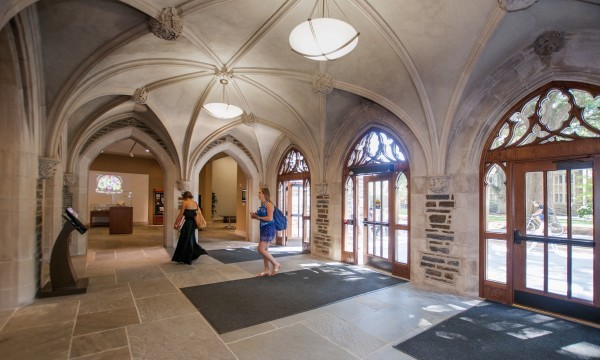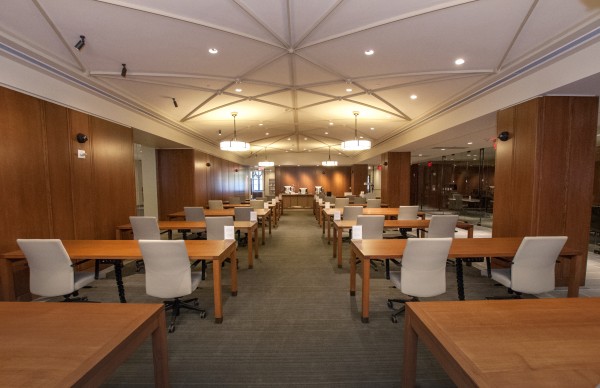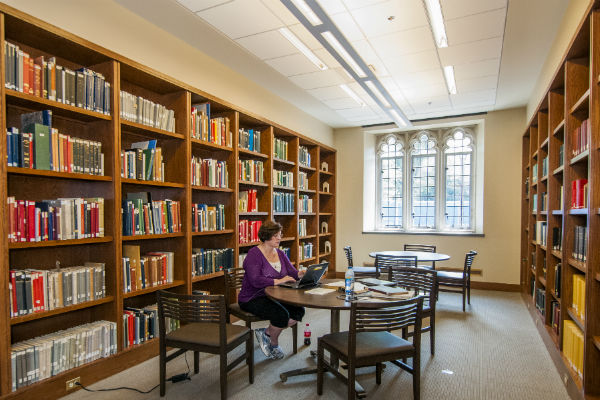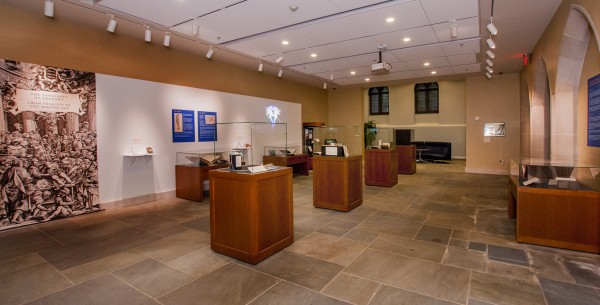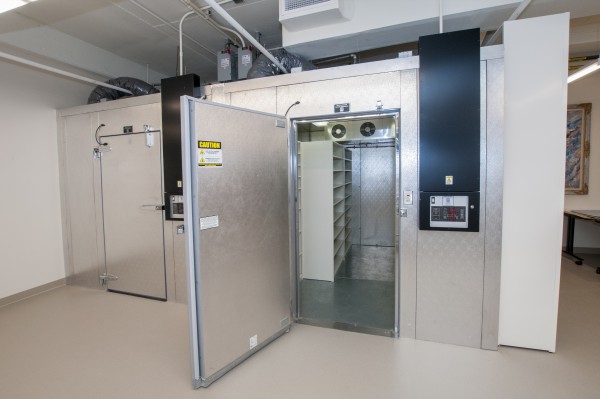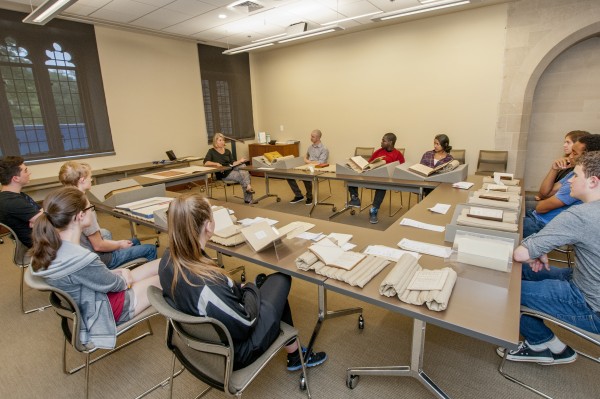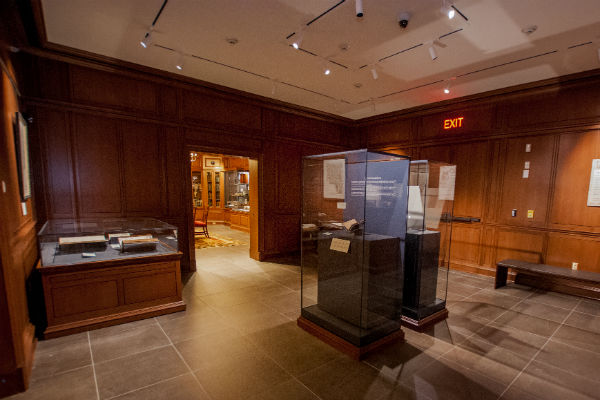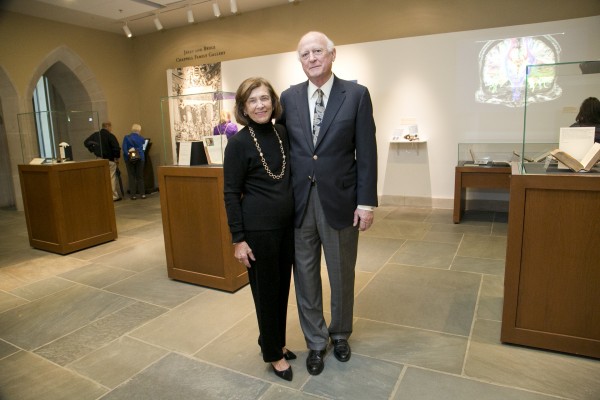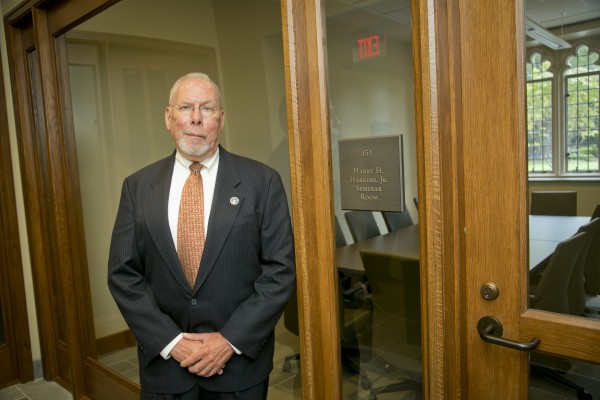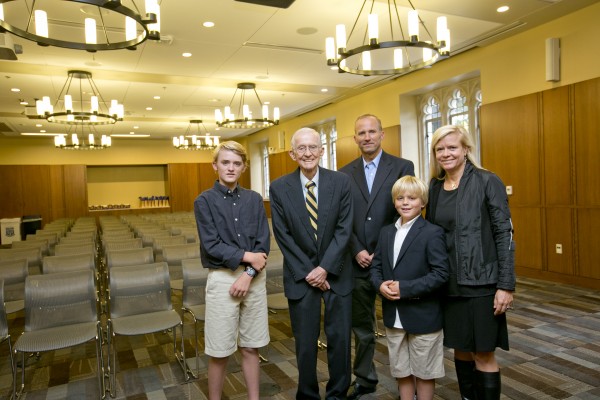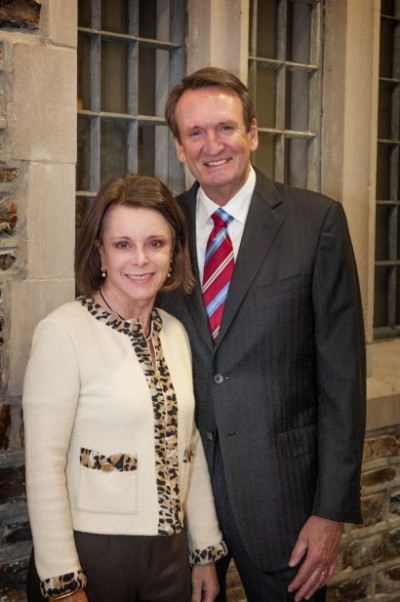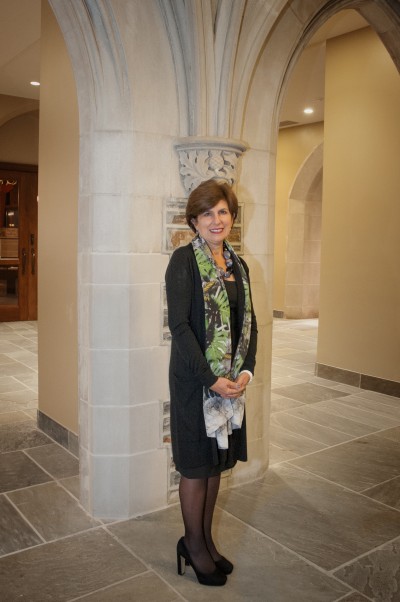Photographs by Mark Zupan
On August 24, the first day of fall classes, the doors of the David M. Rubenstein Rare Book & Manuscript Library finally opened after nearly three years of careful renovation.
The moment represented the crowning finish of the Perkins Project, an ambitious fifteen-year-long initiative to renovate and expand Duke’s West Campus libraries that began in the year 2000.
The Perkins Project called for several phases—beginning with the construction of the Bostock Library and the Karl and Mary Ellen von der Heyden Pavilion; continuing with the renovation of Perkins Library and the construction of the Link, along with the relocation of acquisitions and cataloging operations to the historic Smith Warehouse; and finishing with the construction of The Edge: The Ruppert Commons for Research, Technology and Collaboration in Bostock Library and the top-to-bottom renovation of the Rubenstein Library.
It has been a busy fifteen years. Earlier this October, friends and benefactors gathered to dedicate the Rubenstein Library and celebrate the generosity and support that allowed such an ambitious project to come to fruition.
“The Rubenstein Library is the home Duke has long needed and deserved to showcase our remarkable rare book and manuscript collections and their use in research and teaching,” said Deborah Jakubs, Rita DiGiallonardo Holloway University Librarian and Vice Provost for Library Affairs. “Students and visitors can now see researchers at work and take classes examining rare materials. Expanded galleries provide new venues for faculty, staff, and students to curate exhibitions drawn from the collections, and for the wider community to enjoy and learn from the public programming.”
The Rubenstein Library holds items that can be found nowhere else. In this digital era, when research libraries subscribe to the same e-journals and e-books, and their circulating book collections hold many of the same titles, it is the primary sources that distinguish one library—indeed, one university—from another. Duke students, faculty, and visiting scholars now find in Rubenstein the appropriate setting to carry out their work.
The Duke University Libraries have a longstanding tradition of excellence in public service. We now have the spaces to complement that service. If you have not visited recently, we hope these images will inspire you to come see us soon and see Duke’s newest point of pride.
From the academic quad, visitors pass through the main library entrance and arrive in the Sperling Family Lobby, an inspiring point of entry to the Perkins, Bostock, and Rubenstein library complex.
The Gothic Reading Room is one of West Campus’s most popular spots for events and study. During the renovation, special care was taken to preserve and restore the original windows, wood vaulting, and light fixtures of the room that novelist William Styron ‘47 called his “sanctuary.” The portraits on the walls depict members of the Duke family, past Duke presidents, the original Duke Endowment trustees, Duke’s architects, and the celebrated historian John Hope Franklin.
Another new exhibit space is the Photography Gallery, which provides a dramatic setting to showcase the Rubenstein Library’s outstanding collection of documentary photography.
A large window from the Photography Gallery looks onto the Rubenstein Library’s reading room, where researchers from Duke and around the world come to use our rare books, manuscripts, and archival collections. The rib-vaulted ceiling was designed to reflect the collegiate Gothic architecture of Duke’s West Campus.
The Papyrology and Paleography Room houses the Libraries’ reference collection on papyrological studies, used extensively by the Department of Classical Studies. Duke’s collection of ancient papyrus is one of the largest in North America, and Duke was an early leader in cooperative projects to digitize papyri to make them more broadly accessible.
From the Biddle Room, visitors can walk into the Josiah Charles Trent History of Medicine Room to view historical artifacts collected by Dr. Trent and donated by Mary Duke Biddle Trent Semans as part of the History of Medicine Collections, including surgical instruments, microscopes, anatomical ivory manikins, and glass eyeballs.
On the first floor of the Rubenstein Library is the Holsti-Anderson Family Assembly Room, a highly versatile and AV-equipped event space that can accommodate up to a hundred chairs. The room can be used for a wide variety of library and university events.
The Mary Duke Biddle Room was originally designed to resemble a “gentleman’s library.” The renovation preserved the original charm and character of the room, but new exhibit cases have been installed to showcase rare and unique materials from the Rubenstein Library, including Virginia Woolf’s writing desk, recently acquired as part of the Lisa Unger Baskin Collection and now on permanent display.
Just off the Photography Gallery is the Harry H. Harkins Seminar Room, an instruction space where classes of fewer than ten students can meet and work with Rubenstein Library collections.
Three consultation rooms adjacent to the reading room provide space for teams of researchers to work collaboratively with special collections or consult with Rubenstein Library staff.
The third floor of the Rubenstein Library houses several meeting rooms, collaborative group work rooms, student study space, and the Library’s Human Resources and Business Office. This room is used for classes using Rubenstein Library materials, such as the new semester-long Archives Alive classes, which allow students to get up-close and personal with original primary sources.
A portrait of Reynolds Price (1933-2011), who taught literature and creative writing at Duke for more than fifty years, overlooks the Pamela and Bradley Korman Reception Area, which leads to the Library Administration office suite.
With the renovation, the former Perkins Gallery outside the von der Heyden Pavilion was moved closer to the library entrance and renamed the Jerry and Bruce Chappell Family Gallery. The opening exhibit traced the history of medical visualization, starting with the work of Andreas Vesalius and his groundbreaking 1543 study of human anatomy, De Humani Corporis Fabrica (On the Fabric of the Human Body).
The new secure stack area of the Rubenstein Library has the capacity to accommodate 50,000 linear feet of books, archives, and manuscripts, an increase of 52 percent over the previous special collections stacks. Books are shelved by size (duodecimo, quarto, octavo, folio, double folio) and Library of Congress classification.
A special cold storage unit houses sensitive photographic materials from across the collections, which must be kept at low temperatures to prolong their life.
Directly across from the main entrance are the doors to Mary Duke Biddle Room, which has been transformed into a state-of-the-art exhibit space for the treasures of the Rubenstein Library. Exhibits play an important role in the outreach mission of the Libraries. They also showcase the breadth and diversity of what a great library system like Duke’s has to offer.
Outside the Gothic Reading Room in the Ahmadieh Family Commons is a new permanent exhibit on Duke University’s history. Prepared by University Archives staff, the exhibit traces the institution’s rise from a one-room schoolhouse to an internationally recognized research university.
The Doug and Elise Beckstett Rare Book Library Classroom is the primary teaching space for the Rubenstein Library. It can accommodate larger classes than the Harkins Seminar Room and features a document camera for projecting rare materials on a screen for discussion.
Adjacent to the History of Medicine Room is the Michael and Karen Stone Family Gallery, a new exhibit space designed to feature some of the Rubenstein Library’s most extraordinary treasures. The opening exhibit, American Beginnings, featured a very rare copy of the first book printed in what is now the United States—the Bay Psalm Book (1640)—belonging to David M. Rubenstein ’70, who generously loaned it for our opening. Viewers could also see rare early maps of North America from the collection of Mike Stone ’84.


